When to start planting flowers for spring – and the top 20 to put in now
Our experts explain how to get the timing right for planting spring flowers for best-in-show blooms


March is an excellent time to start planting flowers for spring. If you live in a zone or locale that is still likely to see a frost, ensure that you only put in frost-tolerant perennials for now.
Once the frosts have passed though, and the soil has warmed a little, you can start putting in spring flowering plants if you missed the chance to get ahead in fall. 'Ideally, plan your display for spring a long time in advance, for example spring-flowering perennials like Dicentra, Hellebores, sea thrift, and flowering quince can be planted in the spring for color in a year’s time, or also in fall,' says H&G's garden writer, Drew Swainston.
However, as our Senior Content Editor (Gardens) Holly Crossley points out, most spring plants can be bought now in flower, ready to be planted in borders or containers: 'Violas and pansies are favorite spring flowers of mine and can be bought as plug plants or propagated from seed or cuttings. Plant them out somewhere sunny after the last heavy frosts have passed – they make gorgeous additions to window boxes and patio containers. It's best to harden them off first to avoid transplant shock.'
Below, we go into more detail about planting flowers in spring, and include our top 20 spring flowers, including spring bulbs and more to factor into your spring planter ideas,

Drew qualified as a journalist before studying for a Horticulture qualification. This opened up the chance to work as a professional gardener for several years. During his gardening career he also specialized as a Kitchen Gardener, growing edibles for the restaurants, deli and cookery school at Soho Farmhouse in the UK, and for chefs at a prestigious restaurant. Drew is passionate about walled gardens, growing edibles, and producing cut flowers. He has run a blog called Perennial Nerd for many years, talking about his life working in and managing walled gardens, fantastic gardens he has visited, his allotment, and projects at home. He's now bringing his expertise and passion to Homes & Gardens as a member of our team.
What is the best time to plant flowers?
The best month to plant flowers in spring is really down to the USDA hardiness zone you live in and the likely last frost date. This is likely to be from around March, but if you live in a northern zone, be sure to plant frost-tolerant perennials until you are happy that the risk to more tender flowers has passed.
If you wanted a show of spring flowers, the best time to plant bulbs was in fall. 'Daffodils, tulips, hyacinths, snowdrops – whatever spring-flowering bulbs you plan to plant, fall is the time to do so, before the ground freezes. Whether in pots or borders, ensure the soil is well-draining and that they’ll get plenty of sunshine. Tulips go in slightly later than the others – between late fall and early winter. This helps ward off tulip fire, a disease that causes the foliage to develop a scorched appearance.'
However, as Holly pointed out above, and as Tamsin Westhorpe, a gardening expert underlines, it's not too late to plant flowers for spring now: 'For those who didn’t plant spring-flowering bulbs in fall; there are plenty of potted bulbs on sale for planting in containers now.'

Over the years, Holly has been an allotment keeper, a professional gardener, and a botanical illustrator. Having worked for Gardeningetc.com for two years, she now writes about plants and outdoor living for Homes & Gardens. Holly has a particular interest in houseplants (of which she has an ever-growing collection), garden design, and the benefits of gardening for mental health.
When to start planting perennials in spring?
The best time to start planting perennials in spring is from March and until May. Only put in frost-tolerant varieties if your zone is still likely to see cold weather; once the risk of frosts have passed, you can plant more tender varieties.
Which are the best flowers to plant in spring?
'My favorite spring pots are those planted with the classics of spring – often referred to as spring bedding,' says Tamsin Westhorpe. 'Dwarf narcissi planted with muscari, bellis planted with crocus and violas planted with primroses – all these combinations are perfect for small pots or window boxes where the plants are happy planted tightly together.'
We asked garden expert Wendy Humphries to pick her top 20 flowers for spring. Ideally, most will be planted in fall, but many can be bought as blooms and put in containers right now. We have listed best planting times below.

Wendy’s love of gardening began when she was just six having been her own patch in her parents’ garden. Horticulturally trained with Royal Horticultural Society qualifications, her passion for plants and gardening grew, leading to a long and rewarding career working for several monthly and weekly gardening magazines, including Amateur Gardening. She enjoys visiting gardens for inspiration and has a keen interest in garden and wildlife photography. S
Tulips

One of the most versatile of spring-flowering bulbs, plant tulip bulbs in containers where they look as good as they do in borders. A pot planted with one type of tulip is more eye-catching than the diluted effect of flowers dotted about.
Tulips fade away after a couple of years so it’s best to plant new ones each fall. Tulips prefer a hot, sunny spot.
When to plant
When to plant tulips? Plant bulbs in November to help reduce the risk of tulip fire disease; or buy in containers now to brighten your patio.
Iris reticulata

Dwarf irises arrive in February to March, and bring with them a sweet scent and gorgeous splash of color. Superb in containers when teamed with crocuses, dwarf irises enjoy a sunny spot in a rock garden, container or front-of-border position.
Plant iris bulbs 4in deep in any well-drained soil in fall. Narrow leaves appear at flowering time in spring and elongate into summer before the bulbs become dormant.
When to plant
When to plant iris bulbs? September and October are ideal months; or buy in containers now to brighten your patio.
Dwarf narcissus

After the dull days of winter, the sight of yellow daffodils lifts our mood like no other color. Daffs are real troopers, continuing to grow and flower through the worst of the weather. Reaching no more than 9in, they make great partners with other small bulbs, such as Scilla siberica and muscari, in raised beds, window boxes and rock gardens.
Try naturalizing by planting daffodil bulbs in drifts in the lawn, beneath deciduous trees or around roses.
When to plant
When to plant daffodil bulbs? Daffodil bulbs are planted in September and October to three times their own depth, 4in apart, or much closer in container displays. Or buy in containers now to brighten your patio.
Euphorbia Characias

All spurges make great feature plants. They are drought-tolerant, adaptable and ideal for filling awkward gaps where nothing else will grow, thriving in poor soil in full sun. Mediterranean spurge, Euphorbia characias, is a shrubby, clump-forming evergreen, with bushy, blue-green (glaucous) leaves and long-lasting, bright yellow-green bracts that associate well with bulbs.
There are many varieties and sub-species. Trim back flowered stems to the base in late summer, making sure you wear gloves as the milky sap is a skin irritant.
When to plant
Plant euphorbia after the last frost or in early spring.
Viola Cornuta
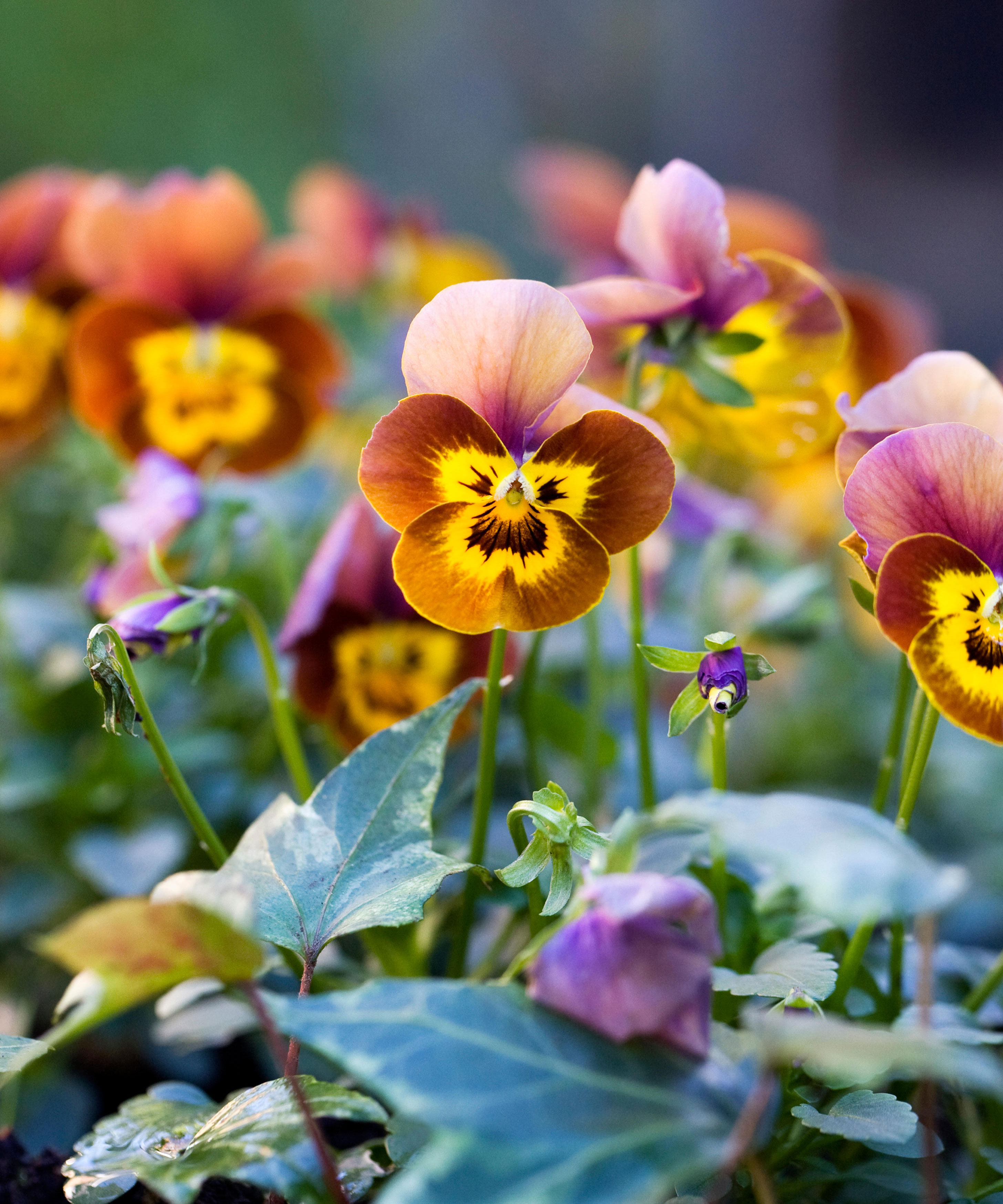
A much-loved plant for spring borders and pots, Viola cornuta is deservedly popular because of its ability to flower over a long period through the worst of the weather. More floriferous than pansies, these compact plants are easy to look after, responding well to deadheading.
Although treated as an annual, Viola cornuta is a perennial. Once plants grow leggy, shear back to promote new growth and a second flush of blooms.
Violas come in a huge range of colors, including black. Grow pansies from seed in spring, summer or fall, or buy as pot plants at any time. Grow in full sun or partial shade in any free-draining soil. Watch out for slug damage.
When to plant
When to plant pansies? Ideally in late summer or early fall, but put them in containers in a warm spot now.
Camellia

Good for pots and borders, camellias provide a fresh splash of color in spring and lovely glossy foliage throughout the rest of the year.
There are hundreds of varieties of camellias. As a guide, here is a description of the two main types of camellias.
Camellia japonica flowers for four to six weeks in spring and comes in a good choice of colors and forms, from white to deep red, in single, double and peony forms.
The x williamsii hybrid camellias, are more hardy, and tolerant of shade than japonicas and may bloom for longer. They are mainly available in pink or white, single- or double-flowering varieties.
Grow camellias in a slightly acidic soil in a sheltered aspect; avoid an east-facing position, where flowers can get damaged by frost. Plant into well-prepared, free-draining soil improved with organic matter. When planting in pots, use a soil-based peat-free ericaceous compost.
Water well in the summer when the buds are forming. Restrict their size by pruning in spring.
When to plant
Camellias are best planted in late summer/early fall when the soil is still warm.
Bergenia

This is an indispensable ground-covering evergreen perennial that chokes out weeds in borders, banks and beneath trees. Bergenias flower in mid to late spring, bearing numerous stems topped with loose clusters of small flowers in a range of shades from pink to white. ‘
All are rich in pollen and nectar. Rounded, leathery leaves turn mahogany or copper in cold weather. Bergenias are amenable plants, happy in poor, well-drained soil in any aspect, though brighter conditions produce better winter leaves and flowering.
Grow at the front of borders to complement spiky or upright shapes, such as ornamental grasses, in groups of three to five to form a carpet.
When to plant
Early fall is the best time to plant bergenia, though you can buy in containers throughout spring/summer.
Alliums
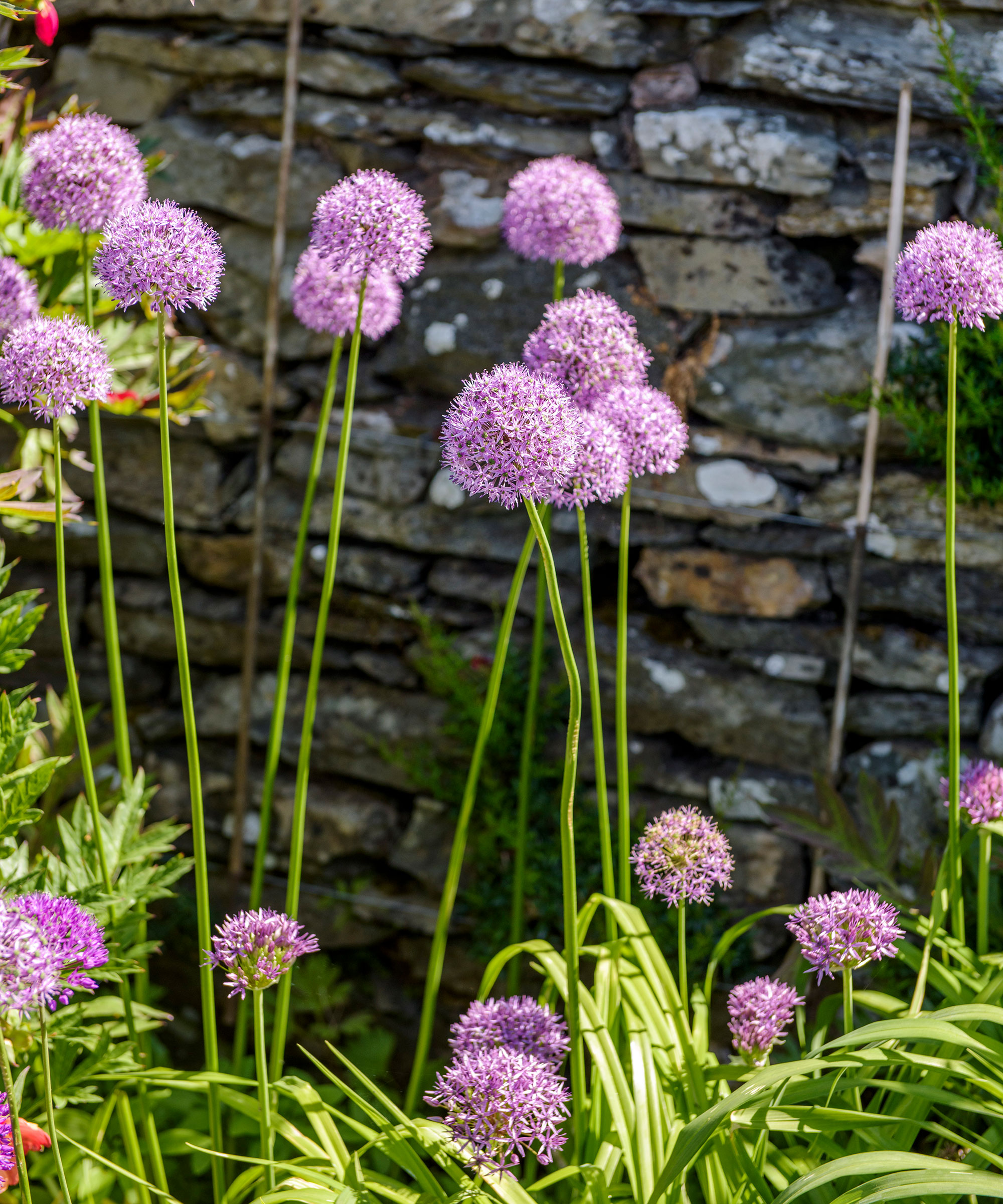
A welcome buzz to the late-spring season comes in the form of alliums. ‘Purple Sensation’ creates a spectacle with its spherical blue heads on 3ft stems, while the cool white heads of ‘Mount Everest’ are most effective when repeated in groups along a border. Allium karataviense bears round heads that are packed with star-shaped pinkish-white flowers on very short 9in stems, perfect for border edging or pots. All are magnets to bees.
If you garden on heavy soil, add grit to the planting hole. The starry seed heads dry in situ and can be left to add decorative touches to borders or picked for indoor arrangements.
When to plant
When to plant allium bulbs? In October, in full sun, into free-draining soil, though, again, you can buy blooms in pots to put in in spring.
Crocus

There is room in every garden for crocuses, among the first bulbs to pop up in late winter. They look great in bare borders where herbaceous perennials are still dormant, lovely in pots and window boxes, too, and make a real statement when naturalized en masse in lawns.
Crocuses are a good source of pollen for early foraging bees. Your choice is between purples, cream, yellows and white; some have stripes or prominent markings.
Plant crocus bulbs in fall, 2 to 4in deep, in a sunny spot on well-drained soil. In lawns, allow the leaves to die down before mowing.
When to plant
From early September onwards right up to Christmas in milder zones.
Snake's Head Fritillary

Deservedly popular, the pretty, nodding chequered bells on thin, slim stems are most effective naturalized in drifts in grass and meadows. Fritillaries will grow in the garden given the right conditions, relishing a cool, damp, moist soil in spring.
These delightful plants come in various shades of purple and white, and some suppliers offer packs of mixed colors. Plant bulbs to a depth of 4in in generous drifts, from late summer to fall, incorporating well-rotted compost to help retain moisture. They will flower reliably in April each year requiring no additional care, but to help them establish and set seed, allow the foliage to die down before mowing grass in June/July.
When to plant
You can plant snake's head fritillary between August and November, though you can buy as container plants from spring onwards.
Magnolia
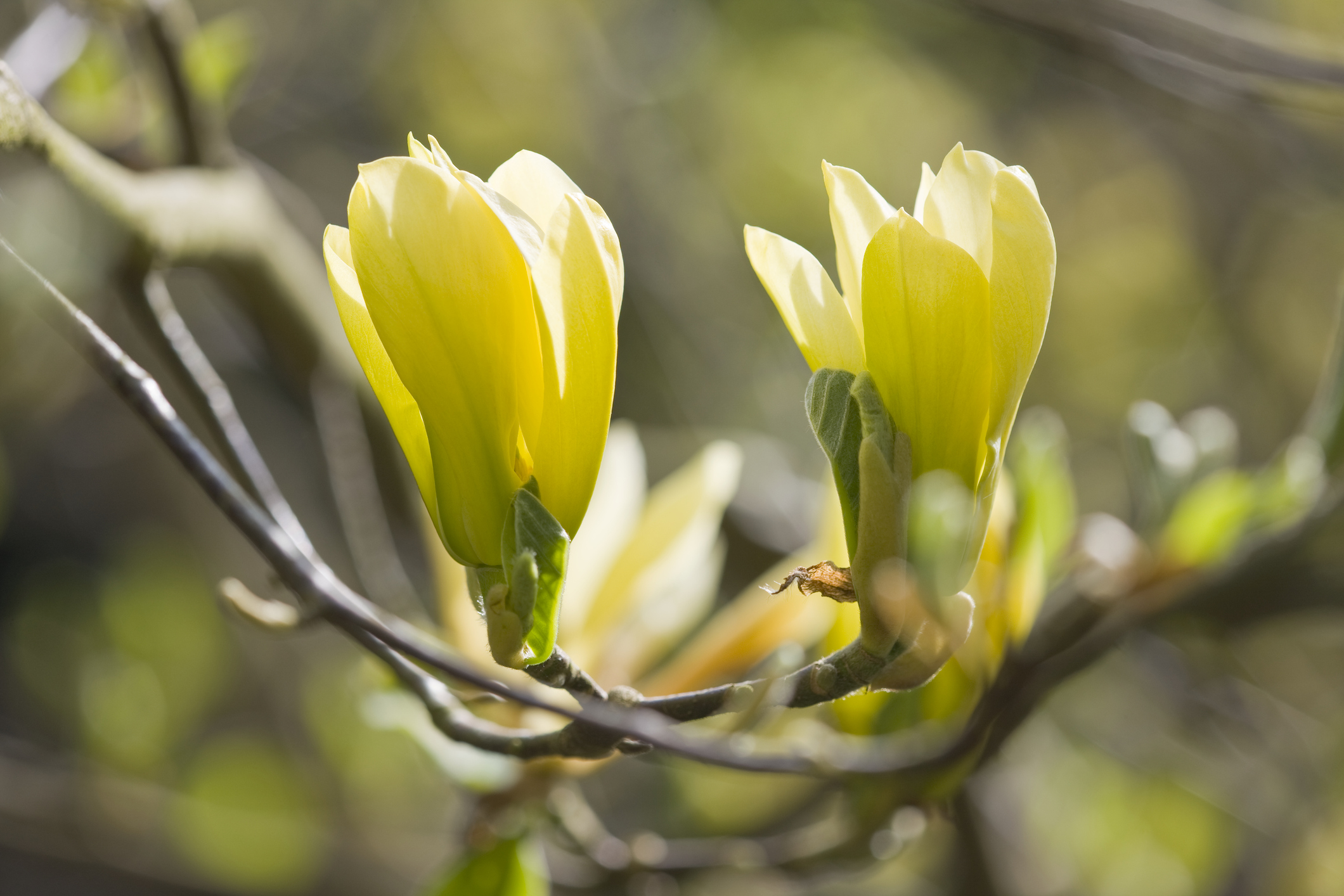
A single specimen planted in a lawn creates a real spectacle, thanks to its starry, goblet or open, scented blooms. Perfect for the smaller garden, Magnolia stellata ‘Royal Star’ has white starry flowers and forms a rounded shrub, ideal for pots. For a compact tree at 6ft tall, try M. cylindrica ‘Lv Xing’, with, cup-shaped white flowers and pink veining from the base.
Some magnolias can outgrow their allotted space, so always check a tree’s eventual size before buying. Plant in a sheltered spot, away from cold winds, on a well-drained, fertile acid loam. Like all deciduous trees, they establish better if planted in fall or spring. Mulch annually to retain moisture, and prune magnolia to help it keep its shape.
When to plant
Magnolia can be planted in late spring and early fall.
Ornamental cherry

One long-lived tree to cherish is a flowering cherry. Masses of red buds open to shell-pink single flowers, a sight to behold against a clear blue sky. Good for a smaller yard, it has a graceful, upright habit and, if pruning is required, branches can be cut back by a third in summer.
Another to try is P. pendula ‘Pendula Rubra’, which has a slender, weeping habit. Branches become smothered in flowers, creating a waterfall of color.
Prunus are best planted in full sun and are unfussy about soil. Avoid waterlogged conditions.
When to plant
Buy and plant cherry trees as bare-roots between November and March.
Bleeding hearts
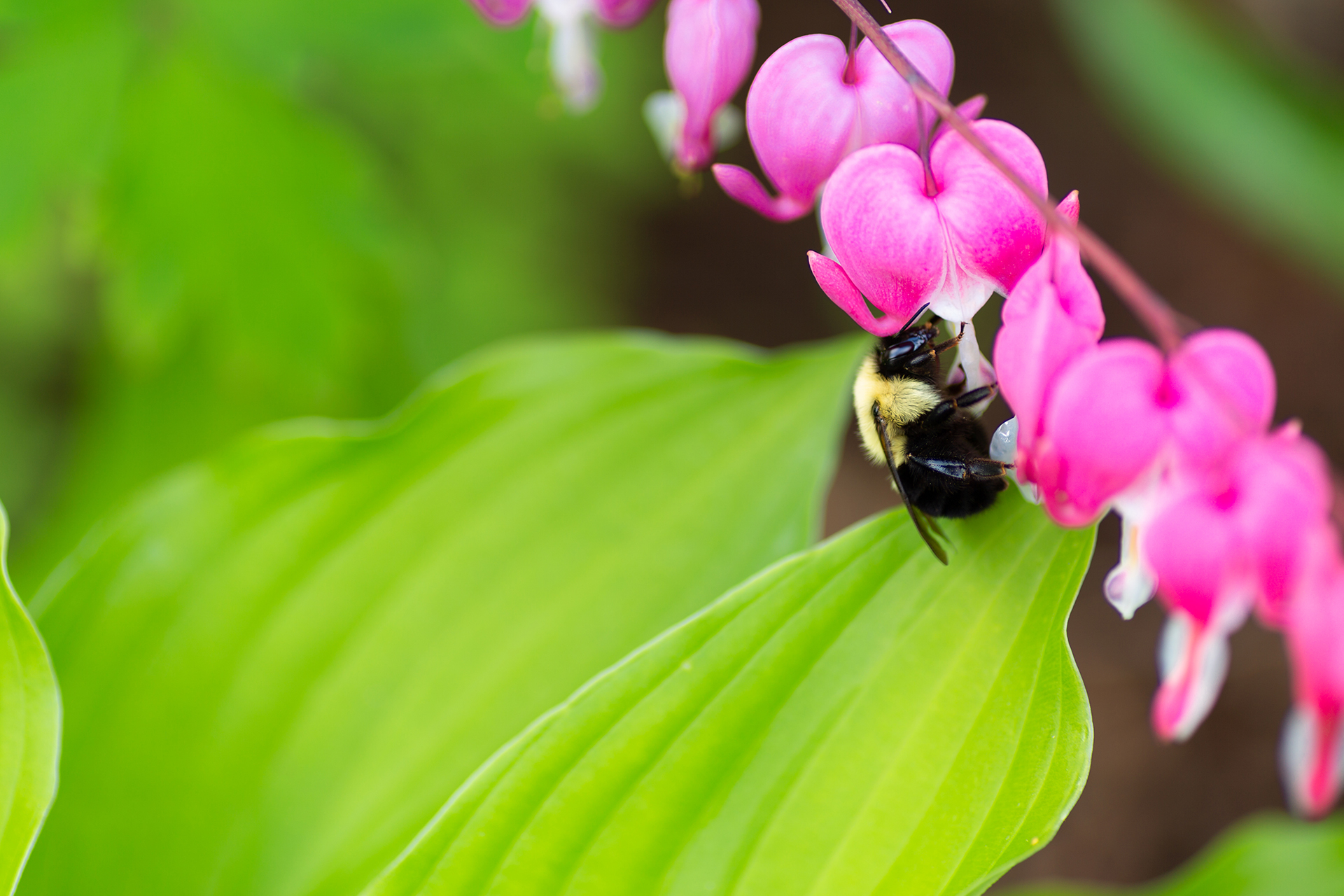
Once known as Dicentra spectabilis, this perennial’s pendant flowers are enchanting as they form on long, arching stems from April to June. The plants make a mound of attractive divided green leaves, disappearing in mid-summer as they go dormant.
They are mainly bicolored. Often sold as bare-roots from fall to early spring, they should be planted where the flowering stems can be clearly seen.
They are happy on any soil, but prefer a cool spot in partial shade. Good companions include brunnera, pulmonaria and hostas. Apply a mulch with organic matter to retain moisture at the roots.
Attractive to bees and moths, bleeding hearts make gorgeous cut flowers. Sear the base of the stems with hot water before arranging.
When to plant
Dicentra can be planted from fall through to early spring.
Primula

Primula add a lovely touch to mixed spring containers. Each plant forms a rosette of long, rounded, toothed leaves, and several tall, stout stems with spherical heads from April into May.
For best results, grow in a loamy neutral-to-acid soil that doesn’t dry out. Mulch in spring to help trap in moisture. Tidy up plants by cutting back after flowering, but allow the heads to ripen and spread seed. Buy plants as bedding or raise from seed started off under cover in spring.
When to plant
Primula can be planted in spring and again in early fall.
Clematis armandii

This is one of the best clematis to grow in that it has both evergreen leaves and large, star-shaped white flowers that appear in late spring.
When the flowers finish, the leaves create a green wall of shiny, long green foliage, perfect as a summer backdrop to a tropical border. This species is vigorous enough to climb into a tree, so it’s best to train it along support wires to cover a wall or pergola. Keep it in check by trimming after flowering.
Grow clematis in full sun in any soil. Although hardy, C. armandii grows best in a sheltered spot out of cold winds, if frost damage does occur, the plant quickly recovers.
When to plant
The best time to plant clematis is in spring, though in milder zones it can also go in in fall.
Lenten rose
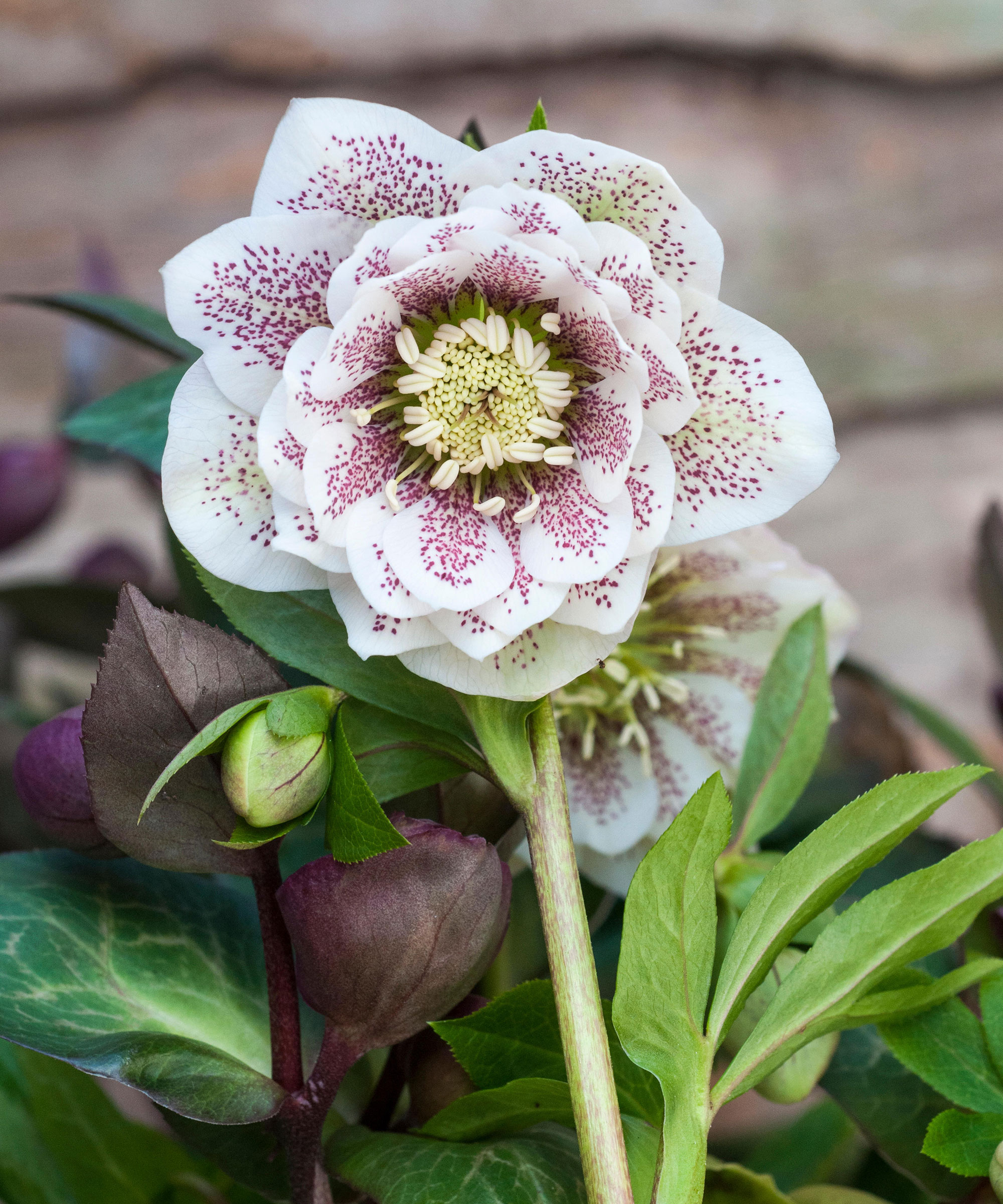
Blooming for weeks, the saucer-shaped single or double flowers are bee-friendly, and there are many hellebore varieties and colors, from white to pinks through to burgundy and black. Some petals are attractively marked with veins or spots, or have colorful nectaries.
As a hellebore growing and care guide, these hardy perennials enjoy shade, and are tolerant of most soils but do best on deep, fertile well-drained ground where roots will have a cool, moist run. Add well-rotted manure to the planting hole and mulch after planting. Trim off the old leaves in December.
When to plant
Hellebores can be planted in fall through to spring.
Aquilegia

Popular for their delightful cottage-style blooms from late spring, aquilegias will grow in tricky places and make useful gap-fillers in mixed borders.
They come in single or double forms, with or without spurs, on long stems above clumps of attractive blue-green leaves.
Plant these easy, hardy perennials into well-drained soil or start from seed in spring. After flowering, simply cut all the stems back hard to the base where new growth will appear.
When to plant
Plant pot-grown aquilegia from February to November, sow seeds indoors from January to May, and sow outdoors from April to June.
Pulmonaria

One of the first perennials to flower in spring, pulmonaria bears lovely bright blue, pink and purple tubular flowers from as early as February. Easy to grow, they form a useful ground cover in shade beneath shrubs and many have striking leaves to boot.
For best results, plant in sun or shade, in any well-drained soil with added organic matter. These easy-going plants simply require deadheading after flowering. Trim the leaves and apply a feed and water, then new growth will appear.
When to plant
Pulmonaria can be planted in spring and fall.
Viburnum

Flowering shrubs that perform from winter right through to the spring are invaluable, particularly when highly perfumed. This is one such reliable plant, with clusters of small tubular blooms that hang from bare stems before young bronze foliage appears. The leaves then go dark green in summer, changing to rich tones in fall.
This shrub is perfect for a mixed border – partner with camellias, hellebores and crocus. Know when and how to prune viburnum: a little pruning is required: thin out by trimming the oldest branches in late spring to encourage new flowering wood. Grow in any soil, in sun or partial shade.
When to plant
Plant viburnum in early fall or spring.
Peony

Among the most beautiful perennials, herbaceous peonies come in a vast array of colors and shapes. The doubles provide the ‘wow’ factor, and the singles and semi-doubles are good for pollinating insects and are fantastic as cut flowers.
Remove the dead heads on peonies as they go over. Peony crowns are hardy and long-lived, and best planted in fall. They are also available in containers at other times. Avoid planting too deeply – this is the most common reason for a plant failing to flower. The crown should be covered by soil to a depth of 1in.
Choose a sunny, open spot in moist, well-drained soil, away from vigorous neighboring plants to grow peonies.
When to plant
Plant peonies between October and March.
Best places to buy spring flowers online
- Amazon spring flowers and plants
- Burpee spring flowers
- Home Depot spring flowers
- Walmart spring flowers
FAQs
Is March too early for flowers?
March is a really good time to plant spring flowers, particularly if the last frosts have passed. If not, be sure to only put in frost-tolerant plants for now. Otherwise, wait until spring warmth is more consistent before putting in spring flowers.
When can you start planting in spring?
You can start planting any time in spring, depending what you want to put in. Anything planted before the last frosts needs to be able to tolerate the cold, however. 'Spring itself is the perfect time to both enjoy the flowers you have and analyze what could be added to boost the display for this time next year. Bulbs are perfect to scatter through borders or a lawn to create powerful boosts of color early in the year. Wallflowers can provide a pop of color, are easy to grow, and should be sowed in mid-summer to flower the following spring,' says Drew Swainston, Homes & Gardens' gardening expert.
As you can see, many perennials are best planted in spring, but if you want flowers from March onwards, you are often best to plant ahead in fall to ensure a wonderful show of blooms from spring onwards. That said, as our experts have demonstrated, you can buy classic spring flowering bulbs now in containers, so that you can still enjoy them.
Sign up to the Homes & Gardens newsletter
Design expertise in your inbox – from inspiring decorating ideas and beautiful celebrity homes to practical gardening advice and shopping round-ups.

Lucy Searle has written about interiors, property and gardens since 1990, working her way around the interiors departments of women's magazines before switching to interiors-only titles in the mid-nineties. She was Associate Editor on Ideal Home, and Launch Editor of 4Homes magazine, before moving into digital in 2007, launching Channel 4's flagship website, Channel4.com/4homes. In 2018, Lucy took on the role of Global Editor in Chief for Realhomes.com, taking the site from a small magazine add-on to a global success. She was asked to repeat that success at Homes & Gardens, where she has also taken on the editorship of the magazine.
-
 What the unexpected fashion trick the 'Sandwich Method' taught me about decorating with color in my home
What the unexpected fashion trick the 'Sandwich Method' taught me about decorating with color in my homeI took a cue from my wardrobe and matched my ceiling to my skirtings – here's why it's my new favorite color trick
By Charlotte Olby
-
 I used to be a lifeguard – this scanning method has stuck with me and instantly catches clutter before it becomes overwhelming
I used to be a lifeguard – this scanning method has stuck with me and instantly catches clutter before it becomes overwhelmingThis life-saving tip now saves me from feeling overwhelmed
By Chiana Dickson